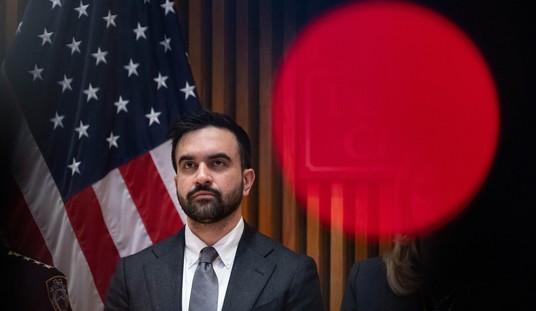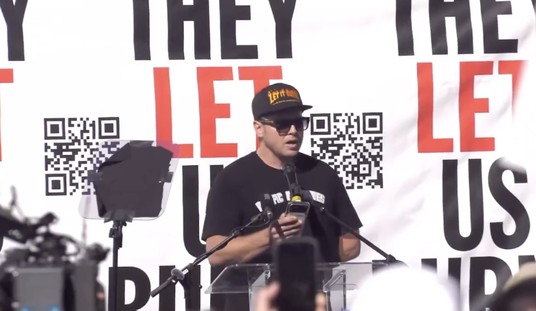The COVID-19 pandemic was a huge eye-opener for America's parents. With schools being locked down for months and in some cases years, they could look over their kids' shoulders, and we now know what a revelation that was. But a new report shows that chronic absenteeism is still a problem in schools. In fact, absenteeism rates are hitting record levels, and are showing no signs of getting any better. As in-person learning halted, and lockdowns began, 55 percent of teachers said that more than half of their students had not logged into online learning.
WOW! How things have suddenly changed! Now, due to severe chronic absenteeism caused by THEIR own COVID lockdowns & obsession with infections, Los Angeles schools are begging students to come to school even if they’re sick! This should never have happened! pic.twitter.com/6yulyAIs3A
— Houman David Hemmati, MD, PhD (@houmanhemmati) August 12, 2023
It doesn't get any better from there. Thomas Dee is an Education Professor at Standford University. In partnership with the Associated Press, Dee found that during the 2021-2022 school year, more than 25 percent of students missed at least 10 percent of classes. that number translates into a whopping 6.5 million students who are classified as chronically absent. Before the onset of the pandemic, just 15 percent of students were missing that same amount of school time. Those playing hookey the most: Alaska and New Mexico at 50 percent and 40 percent respectively, and Washington D.C. at 48 percent. Every state that keeps data on chronic absenteeism saw a jump in ditching school during the 2021-2022 school year. The chronic absenteeism rate in at least seven states doubled between the 2018-2019 and the 2021-2022 school years.
Big spikes in chronic absenteeism including blue states like Oregon, Rhode Island, Washington, Massachusetts, and Illinois.
— Alexander Russo (@alexanderrusso) August 11, 2023
Millions of kids are missing weeks of school as attendance tanks across the US | EdSource https://t.co/u7ojbNr6cD pic.twitter.com/ojysrz1BOe
As you can imagine, all of that school skipping is doing some irreparable damage, and much of it is being done to the children who can least afford it. The National Assessment of Educational Progress puts out something called "The Nation's Report Card" (NRC). Fourth graders who missed three or more days in a month prior to NRC testing scored 17 points lower than non-absent students. The same group of students scored 12 to 13 points lower than those who only missed 1-2 days in a month. A drop in an entire grade level is a score of a drop of 10-12 points.
As is often the case, lower-income students are affected more. From 2015 to 2022, the rate of chronic absenteeism for low-income fourth graders jumped from 15 to 41 percent. Absenteeism for children in the same grade not from a low-income household went up 15- 29 percent in that same period.
There was a bit of good news at least. Students that had just completed the third grade, who were kindergartners at the beginning of the pandemic, seem to come at virtual learning as a challenge during the pandemic but initially had slow learning recovery. In fact, they were suffering some of the largest learning losses nationwide. By the end of the school year, those students had made better-than-average gains.
Are students truly catching up on the education they missed during the pandemic? It doesn't appear so. Even with the Biden administration throwing roughly $190 billion in pandemic relief money at the problem, and programs like tutoring and summer learning programs, students are making slower gains on their learning progress. Karyn Lewis is the director of the Center for School and Student Progress at NWEA, a research organization. She says of test scores pre and post-pandemic, “...because kids are making gains at rates below pre-COVID trends, that means we’re not shrinking those achievement gaps. We’re actually widening them." Further analysis by the NWEA showed that the average student needs roughly 4.1 more months of school to catch up on reading skills and around 4.5 more months for math skills. Lewis says black and Hispanic students need more catch-up time, which would only bring them back up to pre-pandemic levels. Math and reading test scores among 13-year-olds have dipped to their lowest point in decades.
As Americans begin to realize just what a huge mistake closing the nation's schools was during the pandemic, Dr. Anthony Fauci says don't blame him for the school lockdowns. While Fauci did not institute the mandates personally, it was on his recommendations that much of the public policy was made, including the decision by many state governors to close schools.
American schoolchildren may be paying for those bad policy decisions for a long time in the form of their education.
They destroyed a generation of children to rig an election.https://t.co/zqS9P1AoKC
— Tom Tuttle Swears By His Tattoo (@MarkWahhhid) August 11, 2023














Join the conversation as a VIP Member